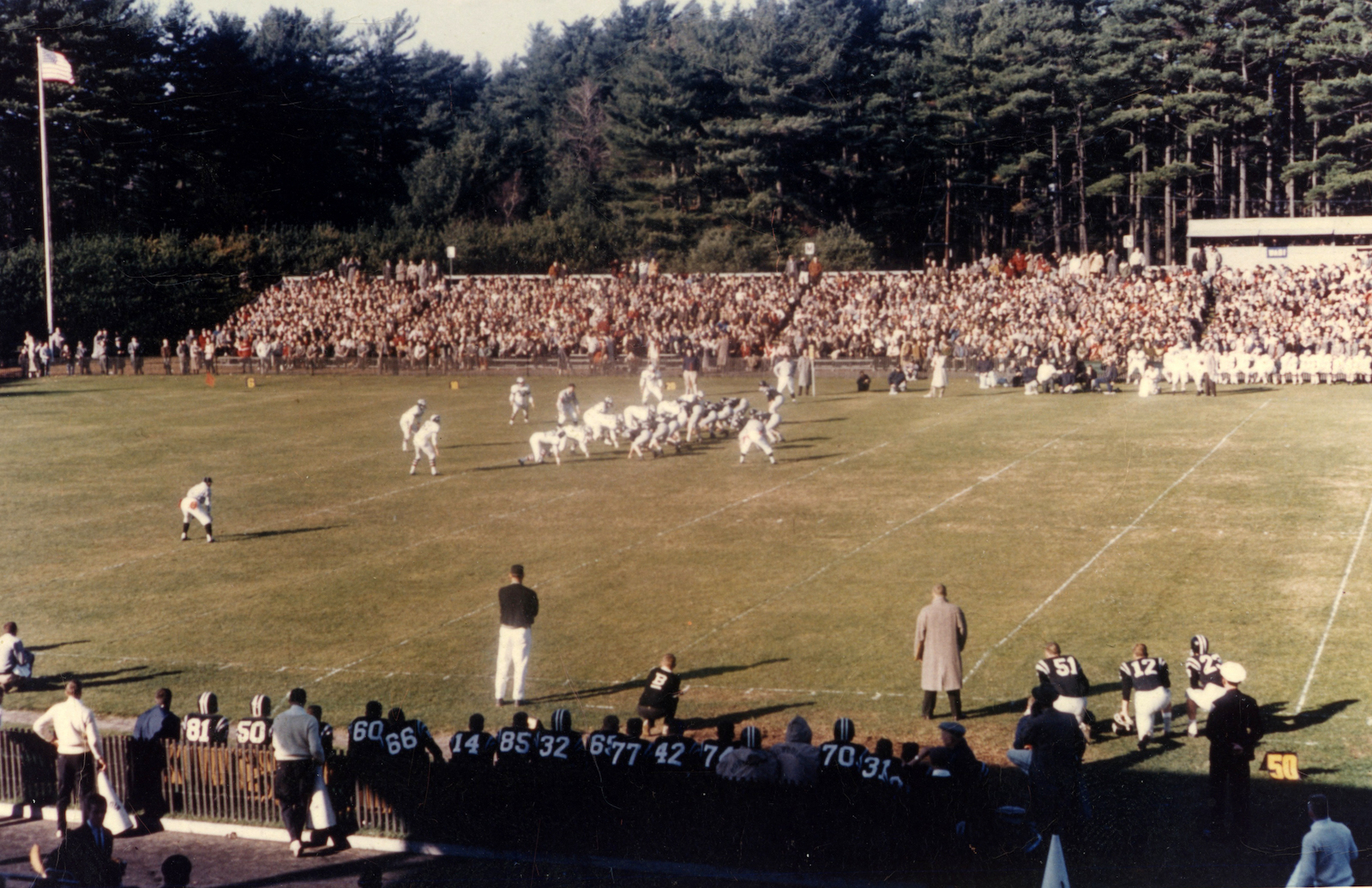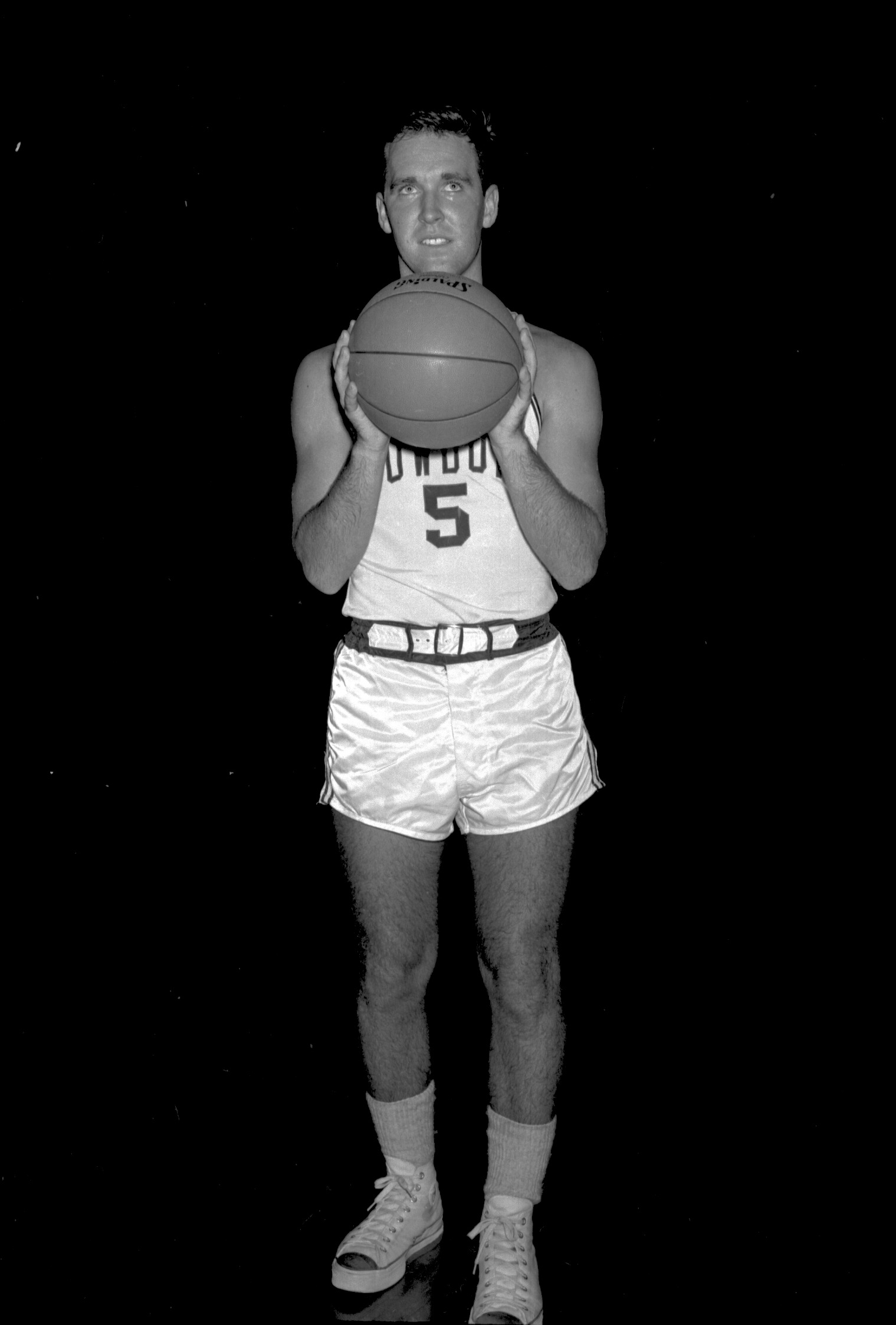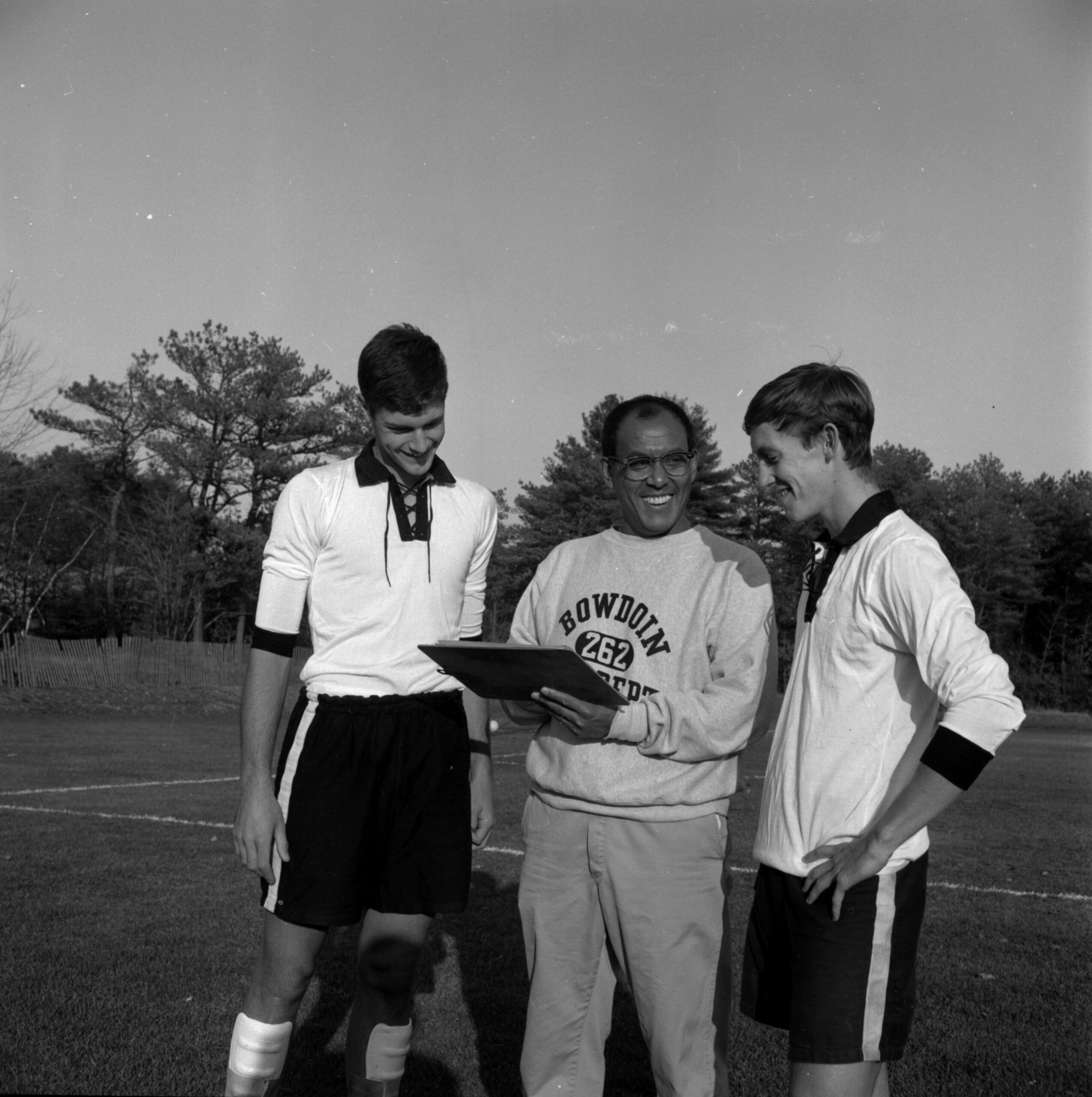Bowdoin athletics grew to new heights in the 1960s
December 4, 2020
An estimated 10,000 spectators flocked to Whittier Field one Saturday afternoon in the fall of 1960 to witness what the Boston Globe referred to as the game of the week between Bowdoin and the University of Maine. However, to Gerard Haviland ’61, and to much of Bowdoin at the time, it was the game of a lifetime.
The 1960s were a dynamic time for Bowdoin athletics. While athletics were smaller, less serious and barely supported by the College, this decade still marked a period of growth, drive and achievement. Further, some believe that the addition of new sports, especially squash, soccer and lacrosse, contributed to the increase of students from prep schools.
 Courtesy of Bowdoin Special Collections and Archives
Courtesy of Bowdoin Special Collections and Archives“There was nothing else to do on a Saturday afternoon. The only game in town was the football game,” Haviland said in a Zoom interview with the Orient. “So if you wanted to do something fun, you showed up at a football game.”
In fact,during the Bowdoin-Maine game, people crammed into the bleaches to watch.
“Townies came to the game and they climbed up the trees so they could see the game,” Haviland said. “It was very common to go to an athletic event at Bowdoin and to have big crowds… there was no football on TV, there was no Sunday afternoon game of the week or any of that with the NFL, so if you wanted to watch a sport, you went to see one of the Maine schools play.”
Football in particular was the center of the College’s social life in a lot of ways. In the 1962-63 Report of the President of Bowdoin College President James S. Coles highlighted the importance of football in the yearly traditions of the College.
“We also schedule the exhibitions to coincide with highlights in the college year—the period of summer visitors, the football season, winter house parties, Ivy time, and Commencement,” Coles wrote.
Although a significant amount of the department’s growth did not come until next decade with the formation of the New England Small College Athletic Conference (NESCAC) and the introduction of female students and athletes to campus, the 1960s were home to expansive growth in terms of facilities.
“I would think that the most remarkable difference is in the facilities,” former football co-captain Mort Soule ’68 said in a Zoom interview with The Orient.
 Courtesy of Bowdoin Special Collections and Archives
Courtesy of Bowdoin Special Collections and ArchivesSoule recalled the differences between the facilities when he was playing and today, noting the switch from grass to artificial turf for football, the decreased distance to the home run fence for baseball, and the dust path that constituted today’s track.
Even so, by the end of the decade, the facilities and programs offered multiplied. With the building of Morrell Gymnasium in 1965, named after Malcolm Morrell ’24 one of the College’s athletic directors, came the addition of squash to the list of sports offered. A couple years prior to that, lacrosse and soccer were also added with the additions of coaches Nels Corey ’39 and Charles Butt to the faculty.
“Those two sports got added in the early sixties,” Bowdoin Secretary of Development and College Relations John Cross said in a Zoom interview with the Orient. “I think it gave more opportunities for intercollegiate competition for people…it did certainly broaden the opportunities for there being three-sport athletes, two or three-sport athletes,”
In the 1960s, many student athletes, including both Haviland and Soule, were two- or three-sport athletes.
“There wasn’t heavy duty recruiting going on,” Haviland said. “If you were qualified for Bowdoin academically and you knew which end of the football was up, you probably would get in.”
Cross also noted that the addition of sports such as squash, lacrosse and soccer also marked the beginning of a demographic shift at the college.
“I think soccer and lacrosse were viewed as sports that were played at a lot of prep schools. Not a lot of public schools had programs in soccer and lacrosse,” Cross said. “That may be a reflection of gradual, slight increase in the number of kids coming to Bowdoin from private schools as opposed to coming from public high schools.”
Haviland also noticed this shift in socio-economic makeup of student athletes from the 1960s to today.
 Courtesy of Bowdoin Special Collections and Archives
Courtesy of Bowdoin Special Collections and Archives“We [student-athletes] were all poor,” Haviland said. “I think that athletic involvement is more tim- and resource expensive than it used to be, and it’s partly because the level of skill and athleticism that’s expected at this level, there are people who are competing at the [NCAA] Division III level now who certainly would have been [NCAA] Division I [student-athletes] 20, 30 years ago.”
Haviland also acknowledged the privilege and gift that leading his team to victory was for him and hopes that Bowdoin football, and he hopes that all athletes will experience the same before leaving Bowdoin.
“The joy of winning: working together to become a winning team and then to actually win. To leave Bowdoin with those kinds of memories is a wonderful, wonderful gift for the college to give to its students, its football playing students,” Haviland said. “It’s also a wonderful gift for anyone on any varsity team at Bowdoin to leave school with when they graduate.”
Editor’s Note 12/4/2020 10:10AM: In an earlier version of this article, Whittier Field was incorrectly identified as Farley Field. Bill Farley (for whom Farley Field House is named) did not graduate until 1964.
Comments
Before submitting a comment, please review our comment policy. Some key points from the policy:
- No hate speech, profanity, disrespectful or threatening comments.
- No personal attacks on reporters.
- Comments must be under 200 words.
- You are strongly encouraged to use a real name or identifier ("Class of '92").
- Any comments made with an email address that does not belong to you will get removed.

Interesting piece of history. Thanks. Wondering when we might expect to see those awesome 2-toned Chuck Taylor high-tops (as modeled by Senator Cohen) in the Bowdoin Store!